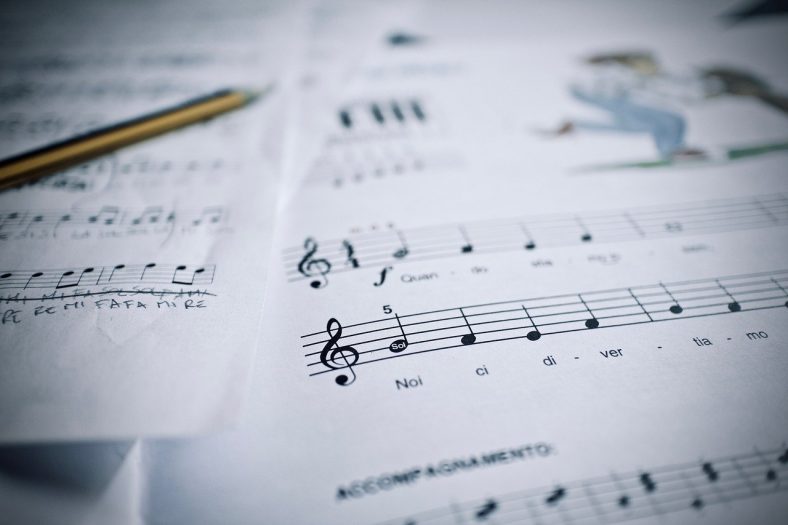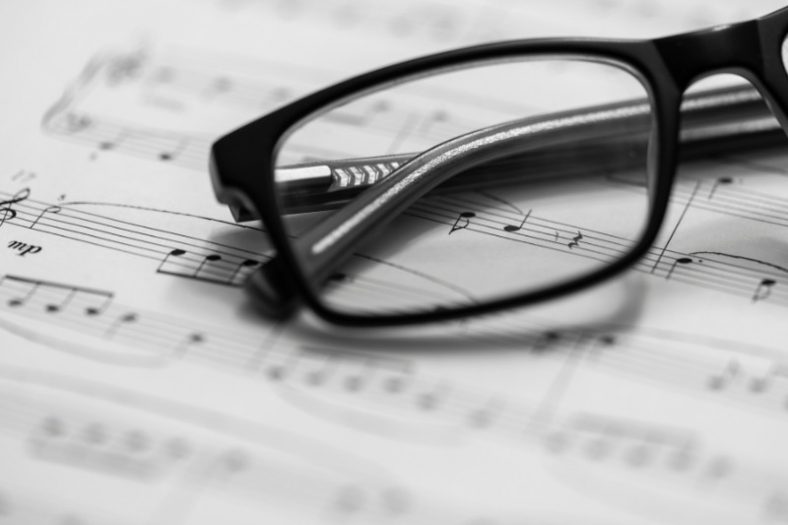Perfect Pitch (What It is, Can it Be Learned, How to Test For It)

Perfect Pitch or Absolute Pitch is the ability to recognize a note without listening to any other reference note. Perfect pitch is an innate ability, sometimes correlated to inborn phenomena such as synesthesia. Musicians who are not born with perfect pitch should try their best to learn relative pitch.
Music teachers and students often overlook it, thinking only a few chosen geniuses can have it. In this article, we are going to define what absolute pitch is and how you can try to develop this skill, even if you weren’t born with it.
Contents
What is Perfect Pitch?

Perfect/Absolute pitch is the ability to recognize a note without any other reference note.
This unusual skill manifests in various ways. For example, you could be able to identify pitches by their name or to sing a named pitch without any help or reference. You could be able to determine what pitch your alarm clock or car horn emits.
You could clearly and accurately recognize the tones forming a chord. Moreover, you could be able to instantly identify the key of a song, without any hint.
Difference Between Perfect Pitch and Relative Pitch
Relative pitch identifies a tone by comparing it to a reference tone. Meaning that you need some help when it comes to relative pitch. Most musicians can play an E chord if you give them an F as a reference, this is nothing special when considered.
The truly remarkable thing is that people with perfect pitch don’t require reference and can easily play or sing an E chord, or more complicated notes. Relative pitch is way more common than perfect pitch, in fact, it’s normal for most musicians to hear a note in reference to another and say if it’s higher or lower than the given note.
While people with relative pitch can play a song by ear, people with perfect pitch can take it a step further and figure out if the song is in the original pitch, or if the original pitch has been changed to another key.
Is a Perfect Pitch Essential for Musicians?

Perfect pitch is not essential for musicians. Musicians should try their best to master master relative pitch. This other important skill implies that you can identify the relationships between notes and tones. For example, you might not be able to name a pitch, but you could identify the interval between two notes. You might not be able to name the key of a song, but you could easily identify the chord progressions.
The good news is ear training, essential to develop your relative pitch, can also help you develop a pseudo-perfect pitch. Two birds with one stone!
How to Test for Perfect Pitch
Testing for perfect pitch is quite easy. You only need to listen to a specific pitch and see whether you’re able to name it correctly.
Try out the Perfect Pitch quiz on ToneDear.com. You can also get their apps for a few bucks.
Alternatively, you could pick a pitch (for example, E flat) and sing it. You can’t have references, and you can’t hum a scale to get to the note. You have to sing the pitch out of the blue, without thinking about it. If you manage to do that, congratulations: you have a perfect pitch.
You can also try Perfect Pitch Test on Tonesavvy.com
If you are looking for a more structured quiz, you can simply google “absolute pitch test” and try one of the many interactive tests available online.
Can Perfect Pitch be Learned?
It is possible to develop a pseudo-perfect pitch through a lot of ear training. The results won’t be as satisfactory as for someone who was born with it. However, after some hard work, you could be able to identify and sing almost every pitch you want.
If you think that sounds impossible, think about sight-reading for singers. Singers who develop sight-reading abilities can sing any pitch they see on paper.
Of course, they may have a few references to help, such as some sort of piano accompaniment communicating them the key or giving them one or more pitches to grasp. However, with time, they might develop an excellent ear and transform their relative pitch into an absolute pitch.
There is a downside, however. Unlike people who naturally have an absolute pitch, anyone who’s aiming at developing it should never stop practicing it.
Unless you are a natural, you will probably need to keep training, or you will lose your ability.
Ear training tips & tricks

Ear training is essential, as having a relative pitch is a sort of requirement to develop an absolute pitch.
There are a lot of excellent ear training apps you can get on your smartphone and use every day. They usually have attractive visuals and make the training feel like a game, with points and challenges. It is quite a fun way to engage in a difficult task.
Ear training is not a simple practice. It requires a lot of focus, and it can be utterly discouraging. These apps are undoubtedly an excellent option to make the work a bit lighter and more enjoyable.
Here are the topics they usually cover behind their fun approach.
- Intervals are the foundation of ear training. You usually start with comparison exercises and then move on to naming and singing them.
- Scales are another important topic covered in ear training exercises. Learn how to recognize and sing different scales, and your aural skills will hugely benefit from it.
- Chords are usually a more advanced topic, but still very important to improve your ear. While practicing them, you will recognize what kind of chord you are listening to or what tones it is made of.
- Sight-singing, as previously highlighted, is a great way to improve your relative pitch and also train towards your absolute pitch goal.
While practicing intervals and scales, however, you could also specifically work on your perfect pitch with a straightforward exercise.
Sit at a piano or look for a virtual keyboard online. Close your eyes, and start hitting random keys. Try to name each pitch you hear, opening your eyes only to check whether you are right or wrong.
Do it every day, and you will get closer and closer to developing an absolute pitch.
Musicians and Artists with Perfect Pitch
You may not know all the artists and musicians who had or have perfect pitch. Perfect pitch was common among some of the great innovators such as Mozart, Beethoven, Chopin, and Handel. More recently, there are a few artists who have perfect pitch, like Mariah Carey, Michael Jackson had it, Jimi Hendrix, Ella Fitzgerald, Bing Crosby, and a few others.
Charlie Puth is the more recent one, he has been open to this topic and is currently the number one example because he has demonstrated his perfect pitch on several occasions. You can see it in full effect in the video below.
Summary
Perfect pitch is the rare ability to identify or sing a given pitch without hearing it first. People with absolute pitch can always recognize pitches, even when they are wrong. However, people who simply have relative pitch may sometimes struggle to name them, depending on the context.
The best way to develop perfect pitch is through ear training apps on smartphones, but practicing intervals and scales on a piano daily will also help. Once you develop an absolute pitch, you will need to keep practicing it to maintain your skills.
This ability is rare, but it is possible to develop through extensive practice. Do not lose heart if you don’t have a natural ear for music. You will be able to train your perfect pitch as long as you are committed and dedicated enough.






